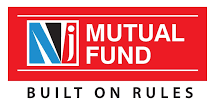Building a diversified portfolio is essential for managing risk and achieving long-term financial goals. Mutual fund and ETFs (Exchange-Traded Funds) are excellent tools for creating a diversified investment portfolio. They allow investors to spread their money across a variety of assets, reducing the impact of any single investment’s poor performance. Here’s a step-by-step guide on how to build a diversified portfolio using mutual funds and ETFs.
Understand Your Investment Goals
Before you start investing, it’s crucial to understand your financial goals. Are you saving for retirement, a down payment on a house, or your child’s education? Your investment goals will influence your risk tolerance and investment horizon. For long-term goals like retirement, you might be more willing to take on risk for potentially higher returns. For short-term goals, you might prefer a more conservative approach.
Assess Your Risk Tolerance
Risk tolerance is your ability to endure market fluctuations. If you are comfortable with the possibility of losing money in the short term for the chance of higher returns in the long term, you have a high-risk tolerance. Conversely, if you prefer to avoid losses even if it means lower returns, you have a low-risk tolerance. Understanding your risk tolerance will help you choose the right mix of mutual funds and ETFs.
Choose a Mix of Asset Classes
Diversification involves spreading your investments across different asset classes, such as stocks, bonds, and real estate. Mutual funds and ETF offer various options in these asset classes.
Stock Funds and ETFs: These invest in shares of companies and are suitable for growth-oriented investors. They can be further diversified into large-cap, mid-cap, and small-cap funds or ETFs.
Bond Funds and ETFs: These invest in government and corporate bonds, providing regular income and lower risk compared to stocks.
Real Estate Funds and ETFs: These invest in real estate properties or real estate investment trusts (REITs), offering diversification and potential for income and capital appreciation.
International Funds and ETFs: These invest in foreign markets, providing exposure to global economic growth and further diversification.
Research and Select Funds
When you select mutual funds and ETFs, consider factors such as performance history, expense ratios, management style, etc.
- Performance History: Look for funds with a consistent track record of performance. While past performance doesn’t guarantee future results, it can provide insight into the fund’s management quality.
- Expense Ratios: Lower expense ratios mean more of your money is invested rather than spent on fees. Compare the expense ratios of similar funds to ensure you are getting a good deal.
- Management Style: Decide between actively managed funds, which aim to outperform the market, and passively managed funds, which track a market index. Active funds might have higher fees, but they offer the potential for higher returns. Passive funds generally have lower fees and provide broad market exposure.
Once your portfolio is set up, it’s important to review it regularly. Market conditions change, and so do your financial goals and risk tolerance. Rebalancing involves adjusting your portfolio back to its target asset allocation. For example, if stocks have performed well and now make up a larger portion of your portfolio than intended, you might sell some stock funds or ETFs and buy more bond funds or ETFs to maintain your desired risk level.




